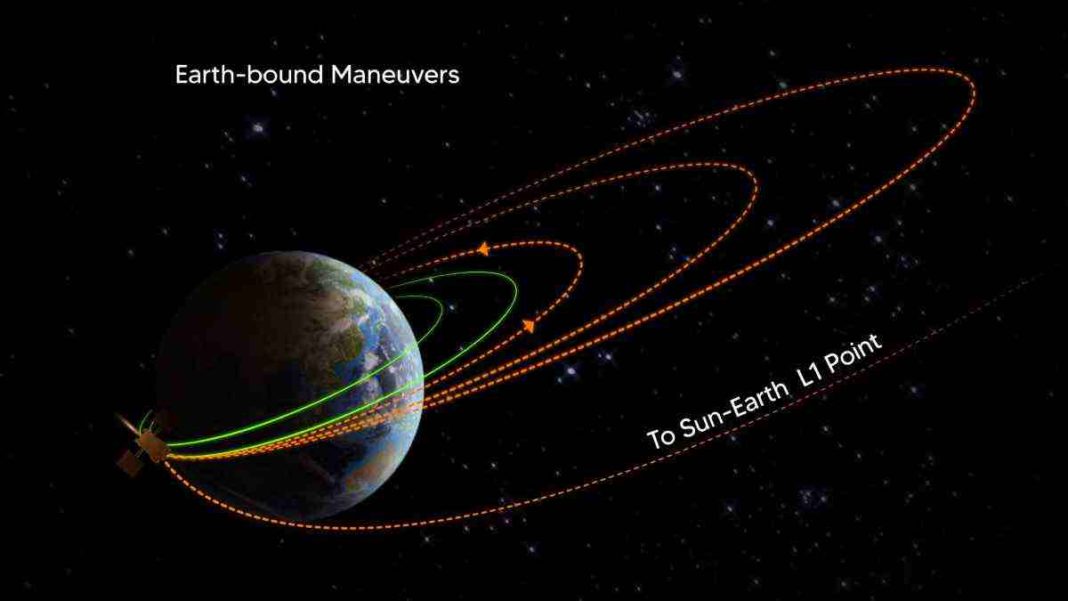INDIA: ISRO’s Aditya-L1 spacecraft has achieved a significant milestone by departing Earth’s sphere of influence and embarking on its mission towards Sun-Earth Lagrange Point 1 (L1), marking a momentous achievement for the Indian Space Research Organisation (ISRO).
ISRO proudly announced on September 30 that the Aditya-L1 spacecraft, India’s maiden solar mission, has successfully broken free from Earth’s gravitational pull and is now charting its course towards the Sun-Earth Lagrange Point 1 (L1).
The space agency took to X (formerly Twitter) to share this remarkable news, stating, “The spacecraft has journeyed beyond a distance of 9.2 lakh kilometers from Earth, successfully escaping the sphere of Earth’s influence. It is now navigating its path towards the Sun-Earth Lagrange Point 1 (L1).”
Notably, this achievement marks the second instance of ISRO sending a spacecraft beyond Earth’s sphere of influence, with the first being the historic Mars Orbiter Mission (Mangalyaan).
The launch of the Aditya-L1 orbiter took place on September 2, when it was lofted into space atop the PSLV-C57.1 rocket, lifting off from the Satish Dhawan Space Centre in Sriharikota, Andhra Pradesh.
This solar mission comes on the heels of ISRO’s significant lunar endeavor, Chandrayaan-3, demonstrating the continuous advancement of India’s space exploration capabilities.
According to ISRO, the Aditya-L1 mission is expected to reach its designated observation point in approximately four months. It will be stationed in a halo orbit around Lagrangian Point 1 (L1), positioned 1.5 million kilometers from Earth in the direction of the Sun.
The Aditya-L1 spacecraft is equipped with seven distinct payloads designed for the comprehensive study of the Sun.
Four of these payloads are dedicated to observing the Sun’s radiant energy, while the remaining three are tasked with measuring in-situ parameters related to plasma and magnetic fields.
India’s main goals for its solar mission are to study the physics of the solar corona and how it heats up, as well as the dynamics of the solar atmosphere, the distribution of solar wind and temperature differences, and the causes of Coronal Mass Ejections (CME) and solar flares.
Furthermore, the mission aims to assess the impact of these solar phenomena on near-Earth space weather, which has implications for space-based infrastructure and communications.
ISRO’s successful launch and subsequent departure of Aditya-L1 towards L1 represent a significant leap forward in our understanding of the Sun and its influence on our planet.
As the spacecraft continues its journey, scientists and researchers eagerly await the invaluable data it will provide, shedding light on the mysteries of our nearest star and enhancing our ability to predict and mitigate the effects of space weather on Earth.
India’s continued achievements in space exploration continue to inspire both the nation and the international space community.
Also Read: ISRO’s Chandrayaan-3: A Race Against the Cold to Revive ‘Vikram and Pragyan’



